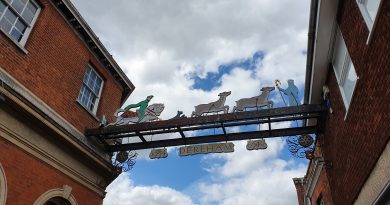Dereham – Church of St. Nicholas (Where are the Older Gravestones?)
One mystery that Richard and I have been discussing on our church walks is where are the gravestones from before 1800? The Hancock Cemetery in Quincy, Massachusetts has many gravestones from the eighteenth century surviving, but in most (but not all of course) churchyards in the UK, there is relatively little before 1800. There are usually some tombs inside churches that are older, but it’s rare to see gravestones from that period outside.
And so I’ve been reading up on this…. The answer seems to be complex, as history usually is.
The first element is practical, gravestones aren’t necessarily that resilient and weren’t really designed to last for hundreds of years. Stone erodes, gravestones fall and sometimes they have to be removed because they’re badly damaged.
The second element is that grave markers before 1800 were often made from wood, which is unlikely to last for much more than fifty years. They were ornately carved in many cases, but not designed to be in their place for centuries. There are some of these at the churchyard in Matlock, but they’re relatively rare now.
The third element is that most people couldn’t afford a stone gravestone, they’d be expensive and the stone would often have to be imported into the area. Transporting lumps of rock isn’t cheap, it all adds to the cost and a poor family couldn’t have necessarily afforded this. In some areas, rock is more prevalent and this was evident in churchyards such as those as Eyam in Derbyshire, where there are more stones from before 1800.
The fourth element is that in some churchyards, there wasn’t that much space. Anything older might have been removed in an effort to create space for new burials.
So, with all those elements combined, it’s more surprising that there are any stones left at all. But, they are there, I found a handful of eighteenth-century gravestones standing in Dereham’s churchyard whilst meandering around today. I also found something I haven’t seen before, eighteenth-century gravestones (and some later ones) which have been laid down and have since been mostly covered over by grass.
These stones are hard to read, but I could make out a few eighteenth-century dates. They appear to have been moved here at a later date, for reasons that are unknown to me. But, this was an interesting example of where in a churchyard the stones have gone, a handful are still present, a handful have likely been lost and a few have been left to be covered over.
I suspect I shall return to these thoughts again as I debate with myself exactly where gravestones in Britain have gone….









